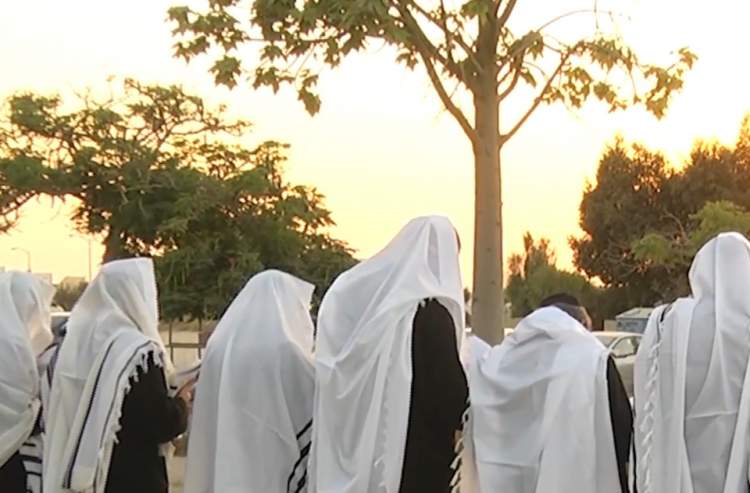Dr. Vern Bengston, a professor of sociology, spent the last 50 years studying families and faith with a focus on how religion is passed down through the generations. Among his findings are some tips that are not very surprising: 1. In order to transmit faith one must actually be religious. That means not only identifying with a certain religious denomination, but actually living the life and being a role model. 2. Not only must you be a good teacher and observe religious law, you must also have a good relationship with your children. 3. Most interesting is that Bengston found that while in non-Jewish families the most important factor in determining religious transmission is how close kids are with their fathers, in Jewish families it is how close they are with their mothers. He speculates that this is because Judaism is such a homebased religion, and elaborates on the significance of that home and the powerful medium it is for the transmission of values. I find it fascinating that sooner or later, all of the wisdom of the world catches up to confirm what the Torah has been teaching for thousands of years. Each morning we say in our davening the words of Shlomo Hamelech, “Shema b’ni mussar avicha, v’al titosh Toras imecha.
Listen, my child, to the rebuke of your father, and do not reject the Torah of your mother.” It seems incongruous that the exhortation to remain faithful to Torah is associated with one’s mother. However, as Bengston correctly surmised, the role of women throughout the ages has been pivotal to the transmission of our G-dly calling. While strictly speaking, women have not occupied front and center on the stage of Jewish history, they have been the “backstage stars,” impacting the course of our existence as a people since the beginning of time. Just consider our Yomim Tovim. Our Sages inform us that the redemption of klal Yisrael from Egypt and the holiday of Pesach that commemorates it, happened in the merit of the nashim tzidkaniyos, the righteous women. Similarly, the giving of the Torah could not have occurred without the prior commitment of the “House of Yaakov,” not to mention its perpetuation throughout the ages, which could not have happened had the women, who make the Torah come alive in the home, not been on board. All of which brings us to the Yom Tov of Purim. Our heroine is Esther, as duly noted in the name “Megillas Esther,” the scroll that records the miraculous, redemptive events she catalyzed and which were orchestrated by Hashem through her input. In studying the Megillah year after year,there are always new insights, lessons and nuances that jump off the pages and draw our attention.
This year, the message that is most relevant to me comes from Esther’s instructions to Mordechai on how to avert the imminent catastrophe. Mordechai had advised her in no uncertain terms that it was her G-d–given duty to go to the king and plead on behalf of her people, regardless of the risk involved. Esther concedes, despite the possibility that she might forfeit her life in doing so. She devises a plan to approach the king. But before putting it into motion, she gives Mordechai certain crucial instructions that have proven to be essential to both our collective and individual survival: “Go and gather the people; have them fast and pray for me…” Then and now, our first line of defense, before launching strategies and affecting change out there in our external environment, has always been to put our own “house” in order. All change and the wherewithal to move forward in a positive direction must begin on a personal level. We must “fast and pray” and ask ourselves if we have compromised our spiritual landscape, and if so, how can we correct it. The sobering fact of our tortured existence as a nation is that our enemies are empowered to destroy us only after we have self-destructed. Indeed, if we are intact internally, no external force would be able to touch us. We live with the illusion that outside circumstances hold the key to our well-being. “If only” I were rich. “If only” I were a doctor or lawyer. “If only” I were married to someone different.
For some of us the challenge is envy, assuming erroneously that others have what we need. For others the obstacle is negativity, walking through life with a dark cloud hanging over our heads that is only a product of our own making. Many fault the relationships in their lives—spousal, children, in-laws and friends—for causing their misery. In reality, of course, meaningful existence only comes from the inside-out, from confronting our inner demons and making inroads in our spiritual health. Consider Shaindy, who was orphaned of her mother at a very young age. She used that loss to justify her dissatisfaction with everything in her life. Her existence was an endless diatribe of perceived deprivations. Her toxic attitude poisoned all of the good things—and there were many with which she was blessed, including a fine husband, children and friends. She exuded negative energy wherever she went. Finally, the loss of a loved one jolted her into the realization that each of us shapes one’s own reality. She came to understand that our lives are not determined by outside forces no matter how compelling and challenging they may be. A wonderful example of a woman who refused to live by the dictates of her circumstances was Sarah Schenirer, whose yahrzeit is in the month of Adar. She was a simple seamstress, childless and wracked by an illness that took her life at the young age of 51.
Yet despite all that, her contribution in establishing the Bais Yaakov movement to educate girls altered the course of Jewish history forever. She left behind legions of women who had been given the wherewithal to build Torah-true homes. While suffering from her final illness, she wrote to her charges, “My dear girls, you are going out into the great world. Your task is to plant the holy seed in the souls of pure children. In a sense, the destiny of the Israel of old is in your hands” (courtesy of Rabbi Yitzchok Eisenman). In conclusion, the words of Esther Hamalkah exhorting us to “fast and pray” reflect an inner focus, giving us the key to understanding that Hashem has gifted us with the power to shape our own destiny and personal redemption. Unquestionably, just as in the Purim story, collective redemption will follow our efforts to get back on track. May Hashem see fit to obliterate all the Hamans that surround us and reinstate all the “would-be” Mordechais and Esthers.




